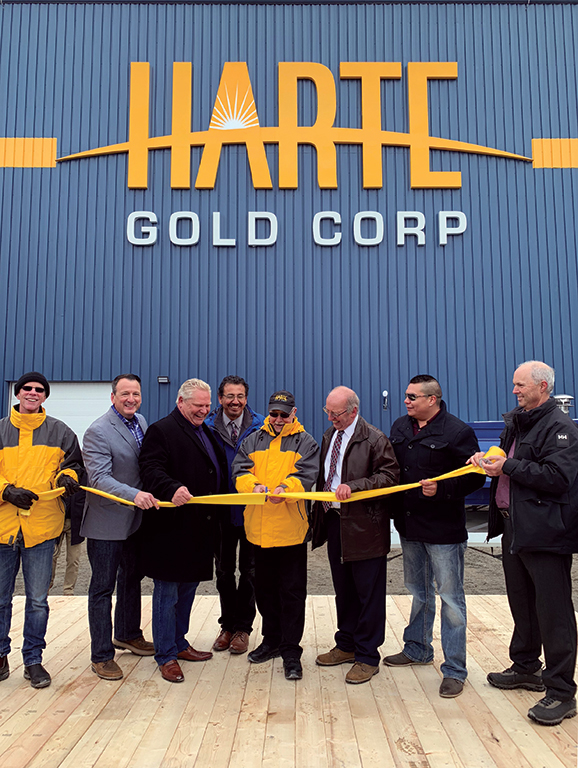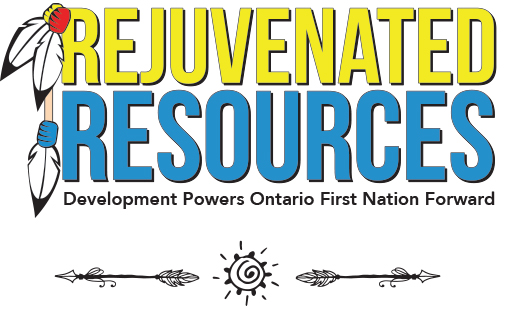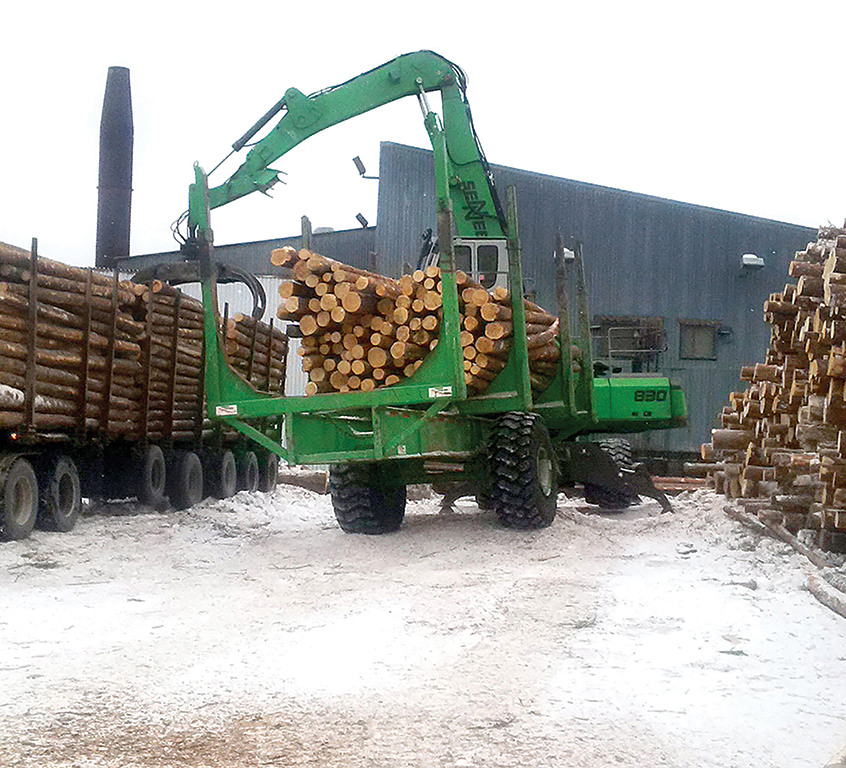

Netmizaaggamig Nishnaabeg (formerly known as the Pic Mobert First Nation) is an Ojibwe community of about 1,000 members with two land bases, Pic Mobert South and Pic Mobert North, which lie off Highway 17, near White River, Ontario.
Twenty-five years ago, Netmizaaggamig Nishnaabeg found itself surrounded by thriving industries in the mining and forestry industries but with few of the benefits flowing their way.
“The community was in the midst of this various rich, prosperous and busy resource zone with one of the biggest gold mines in the world down the road (Hemlo) and this large forestry operation (in nearby White River), and the community was effectively shut out of most of it,” remembered Norm Jaehrling, Netmizaaggamig Nishnaabeg’s executive director of economic development, who was speaking at a 2017 business forum in Ontario.
Then, the Domtar mill in White River shut down in 2007. Few of the 250 jobs lost had belonged to Pic Mobert members. Nonetheless, the Pic Mobert Chief at the time, John Kwissiwa saw an opportunity to work with the Town of White River. An announcement was made that together, the First Nation and the Township would buy the sawmill assets to prevent them from being bulldozed and also to keep the associated forest harvesting license intact. The new company name was White River Forest Products Ltd.
It would take several more years and a third partnership with a powerful forestry titan, Frank Dottori, the founder and ex-CEO of forestry giant Tembec, to re-open the sawmill in 2013. The sawmill grew and today employs the latest technology, continuing to deliver benefits to the Netmizaaggamig Nishnaabeg through employment for its members and profits for the entire membership through the joint ownership.
According to Ontario’s Ministry of Indigenous Affairs, White River Forest Products is investing $9.5 million to upgrade and modernize its White River sawmill, which will maintain 161 existing jobs and create 15 new ones. Approximately 25 per cent of the mill’s employees are from Netmizaaggamig Nishnaabeg.
The company was awarded $1.9 million in provincial grant funding in 2017 in support of the four-year modernization project of the sawmill in White River. The modernization project is aimed at increasing production and efficiency along with new product development.
The Netmizaaggamig Nishnaabeg sawmill investment proved to be but one part of an economic development strategy that is now generating phenomenal growth and benefits. The First Nation’s business activities continue to expand and grow into new sectors and their community is enjoying an economic boom. The lessons for other indigenous communities are plentiful.
What is behind the strategy that produced such success?

Entering the hydro-electric business
According to Norm Jaehrling, the history goes back much earlier than the White River Forest Products’ story. It really starts with Netmizaaggamig Nishnaabeg endeavoring to build two hydro-electric projects on the White River in the 1990s. That’s when the First Nation learned about business and began the foundations upon which they are building their economy and nation now.
In 1992, the Ontario government began encouraging independent electricity producers and Netmizaaggamig Nishnaabeg saw an opportunity for two hydro-electric power plants on the White River in their traditional territory.
Unfortunately, there would be no true market to sell the electricity until after the year 2000. Patience was required.
Eventually, in 2016, Netmizaaggamig Nishnaabeg succeeded in constructing and commissioning two generating stations, called the Gitchi Animki project. The project was so successful it was recognized by the Ontario Water Power Association’s awards that same year for sustainability and innovation.
It was a long process and Jaehrling says throughout Netmizaaggamig Nishnaabeg learned project management: how to define and optimize the resources they had and define a project scope; link up with the right partner (in this case, Regional Power Inc.) and draft the right joint venture agreement; get a viable bid to build the project; finance the project; and finally, build it.
There were hiccups along the way. The original contractor defaulted and so it was back to the drawing board. More financing had to be found. But Netmizaaggamig Nishnaabeg got it done the second time around.
In addition to distributing the annual profits from the Gitchi Animki project to Netmizaaggamig Nishnaabeg members, three operators from the community have been trained and employed with long-term jobs (some say lifetime jobs). And, more importantly, Netmizaaggamig Nishnaabeg learned how to execute major business projects. With their hard-earned expertise in the electricity market, Netmizaaggamig Nishnaabeg then expanded into two small solar projects. More recently, in December, 2017 Netmizaaggamig Nishnaabeg signed a deal with five other First Nations to take a 20 per cent stake in the big East-West Tie Transmission Line project – a $777 million, 450-km electrical transmission line that will be built from Wawa to Thunder Bay, Ont.
But back in 2009, Netmizaaggamig Nishnaabeg were already applying their new-found knowledge in other joint ventures with various other private companies. These joint ventures, in addition to the early hydro-electric projects and White River Forest Products, include:
• Outland Joint Venture, with Outland
Camps for the operation and construction of work camps;
• Belisle Joint Venture, with Belisle
Forest Products for civil construction works; and,
• Kabi Joint Venture, with Kabi Lake
Forest Products, also for civil construction works.

A Gold Mine Gets Built
Their business experience was brought to bear again when, in 2009, a struggling gold project near White River, owned by Harte Gold was rejuvenated with new investors.
“The current management team was asked to come in and take over the company, make it viable and profitable,” says Tim Campbell, executive vice president of Harte Gold.
“At the time, a very small gold deposit had been outlined. We have since increased that by 10 times, and built an underground mine and a mill.”
As the mine project was in Netmizaaggamig Nishnaabeg traditional territory, Harte Gold began consultations with them. “We got to know the Pic Mobert First Nation in late 2009/early 2010,” says Campbell. “We started consulting them about what we were doing with the mine project and discussing our short, medium, and long-term plans.” At the time these talks began, most other local resource businesses were in desperate straits, whether in mining or forestry. As these sectors were the principal employment generators in White River and for Netmizaaggamig Nishnaabeg, the downturn had drastic consequences for the communities. It was also the time during which Netmizaaggamig Nishnaabeg and the Town of White River were attempting to revive the local sawmill through White River Forest Products Ltd. The Netmizaaggamig Nishnaabeg leadership realized that helping a gold mine get built in the area would be good for local employment and that there could be some synchronicity between the mine and forestry operations. Campbell explains how.
“There was no direct road access to the mine site,” says Campbell. “We wanted to reduce a 2.5-hour drive to a 45-minute drive. We found an old Domtar logging road that provided half the length of the access road from the highway into the site. It was built to the high standards of a lumber company using big trucks and therefore sufficient for our needs too. We needed to lengthen that section of forestry road the rest of the way to the mine site. It would take three years and $5 million to do so.
“That new section of road we built also provided access to more forests. This was a benefit to the sawmill in town. They were able to get in there on our nickel because we didn’t charge them anything to use the road. It was a neat way of bringing a benefit to the local town and the Pic Mobert First Nation. We were keen to leverage whatever we were doing for the benefit of the local communities. It’s a good news story that worked out really well for all of us.”
With that kind of cooperative philosophy, Harte Gold entered into an exploration plan with Pic Mobert in February 2011. “Since then, we have always worked with the Pic Mobert First Nation and the Town of White River,” says Campbell.
When road construction started, new jobs immediately began flowing to Pic Mobert members. “One of our best big truck drivers was a woman from Pic Mobert,” says Campbell. “She is still working with the construction contractor, Kabi Lake Forest Products.” Once the access road was built, Harte Gold moved forward with the mine project. “We drilled hundreds of holes to complete more test mining. We already had 180,000 ounces of gold resources. We built that up to 1.7 million ounces, which we announced earlier this year. That’s enough for a 15-year mine life,” says Campbell.
“In the meantime, we have done a couple of archeology studies that employed Pic Mobert people in the field crew.
“In 2015, we mined 70,000 tonnes under a bulk sample and trucked the ore to the nearest mill at the Hemlo Mine [owned by Barrick Gold]. We did the trucking with Kabi Joint Venture, co-owned by Pic Mobert. That work was sufficient for Pic Mobert to realize enough profit from its share of the venture to buy a truck of their own and add it to the fleet, which adds additional economic participation for them.” Much more construction work ensued at the mine site, including building the mill and underground development. On October 24, 2018, Harte Gold officially opened the new mine, called Sugar Zone Gold Mine. It was a big event and Ontario Premier Doug Ford attended the ribbon-cutting ceremony. Sugar Zone was the first high-grade gold mine in over ten years to open in the province.

Today, Netmizaaggamig Nishnaabeg members are working in the underground mine and in the mill. The underground work is done by roughly 100 contract miners who aren’t direct employees. Most of these contract workers come from out of the area and require a place to board while in White River. A joint venture was formed between Outland Camps, the Morris Group out of Thunder Bay and Netmizaaggamig Nishnaabeg to provide room and board at Harte Gold’s campsite in White River, which accommodates up to a hundred people. Another joint venture with Norpro Security provides site security.
Between the mine and the town campsite, roughly 20 Netmizaaggamig Nishnaabeg members are employed full-time. “One of the reasons we put the camp in town is to minimize our environmental footprint at the mine site,” says Campbell. “To do that, we bought a trailer park in White River. It’s on 10 acres and has access to all the town services. We also invested in an effluent treatment plant on site – what most people know as a water treatment plant – in a further effort to reduce environmental impacts.”
Harte Gold is still increasing its operational potential at its Sugar Zone Mine. Consultation with Netmizaaggamig Nishnaabeg continues on a regular basis. “I was just up at Pic Mobert for one of my periodic updates,” says Campbell. “We have come to like and depend on Pic Mobert. We took the position early on that we are both on the same team with the same goal.”
“They trust us and we trust them. They’ve been with us through the whole journey,” says Campbell. “As we ramp up production, there will be more and more interaction between the band office and site personnel.”
Campbell is hopeful that the Sugar Zone Mine will be around for longer than currently estimated. “We hope to at least double our current 1.7 million ounces gold resource. We think the potential is real and immediate and that the mine life could grow to 30 years.”
Lessons
In conclusion, Netmizaaggamig Nishnaabeg leadership took opportunities to get into business for themselves, persisted until success was achieved, learned business acumen along the way, found the right private business partners to work with and continued building a diversified range of joint ventures that made sense for the resources in their traditional lands.
When it is feasible, Netmizaaggamig Nishnaabeg venture into business on their own.
In 2014, the Netmizaaggamig Nishnaabeg leadership under Chief Johanna Desmoulin consulted their membership to get approval for a formal economic development strategic plan, thereby winning grassroots support. The membership overwhelmingly voted for it.
In a message from the Chief on the Netmizaaggamig Nishnaabeg web site, she thanks them:
“With our lands and this economic development strategic plan, we will take control of our own destiny,” she wrote. “Our community will continue to grow economically, socially and politically at a pace that is both challenging and exciting. We know we have the opportunity to embrace this and continue ‘moving forward.’” ABQ

